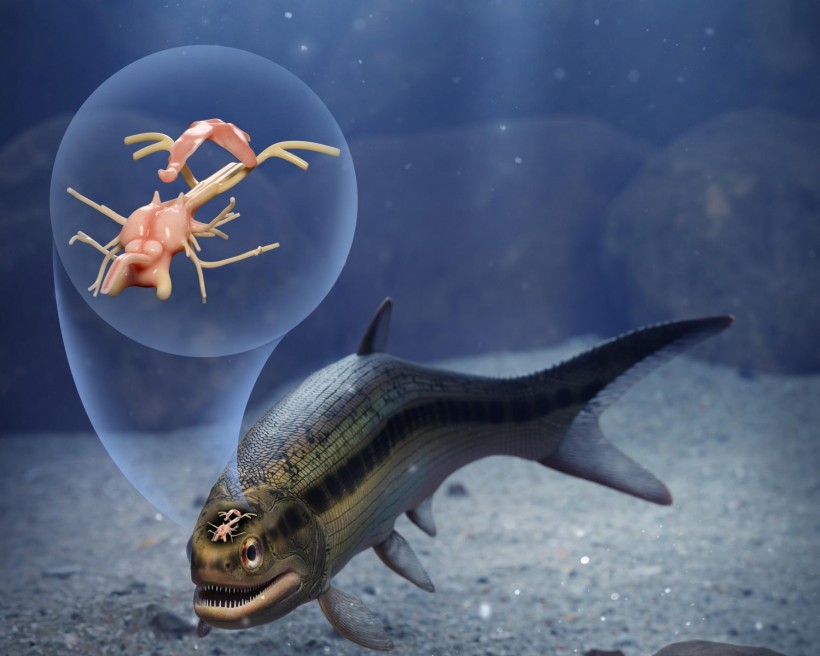Scientists discovered a fossilized fish skull and were able to scan a well-preserved brain inside it, and this is a rare happening in the field of ancient findings. Researchers were unable to unearth a unique fossil aged 319 million years old, focusing on a ray-finned fish lineage whose species are abundant on the planet's waters until now.
Preserved Brain Fossil Discovered inside 319M years-old Skull

(Photo : Márcio L. Castro)
Artist's render of a Coccocephalus wildi, and the brain found inside when its fossil skull was discovered.
Researchers led by Rodrigo Figueroa from the University of Michigan, with collaborators from the University of Birmingham, published a new research in Nature's journal on their findings in a fish skull fossil.
In this study, they examined this fossil found in a coal mine in England more than a century ago and used a non-invasive CT scan to know what is left inside. Here, they found a "well-preserved" brain of a fish which also held several answers to animal evolution.
According to a news release from the University of Birmingham, it opens up different studies in the neural anatomy and the early evolution of a significant group of fishes present now, the ray-finned fish.
They found a brain and cranial nerves inside for about one inch in size (2.5 centimeters long), but due to the fossilization, some parts of it were already replaced with minerals which helped in its preservation.
Read Also: Archaeologists Discover a Trove of Engraved Gems Near Hadrian's Wall in England
Fish Evolution Secrets Unveiled from Brain Fossil
The skull was from a Coccocephalus wildi, a small ray-finned fish that was present more than 319 million years ago.
"This unexpected find of a three-dimensionally preserved vertebrate brain gives us a startling insight into the neural anatomy of ray-finned fish. It tells us a more complicated pattern of brain evolution than suggested by living species alone, allowing us to better define how and when present day bony fishes evolved." says Sam Giles from the University of Birmingham.
Fossils and Preservations
It is known that internal organs are one of the first to go after burial and the chemicals they put on a dead body loses their effects. This applies to humans, animals, and other living organisms on the planet.
One of the most famous ancient burial processes for humans is Egypt's mummification, but in their case, they remove internal organs through the embalming process into canopic jars to further preserve the body.
However, there are also other ways to preserve humans, animals, and artifacts, as evidenced by shipwrecks and their poor victims. The planet's waters do not only hold the key to life, but also several answers to different ancient questions that technologies are uncovering now.
Salt is abundant on seas, and is a good way to preserve or dry out fish, whereas sediments also help in the process.
Fishes do not have the luxury of burying their dead as humans or animals do, and when they meet the end of their lives, these creatures stop swimming, and either fall to the bottom of the oceans, seas, or rivers-or float to the surface. In this discovery, it was taken from a coal mine, and through modern technology, was able to view its remains, only to find a well-preserved brain inside.
Related Article: Archaeologists May Have Discovered Egypt's Oldest, Most Complete Mummy at 4,300 Years










